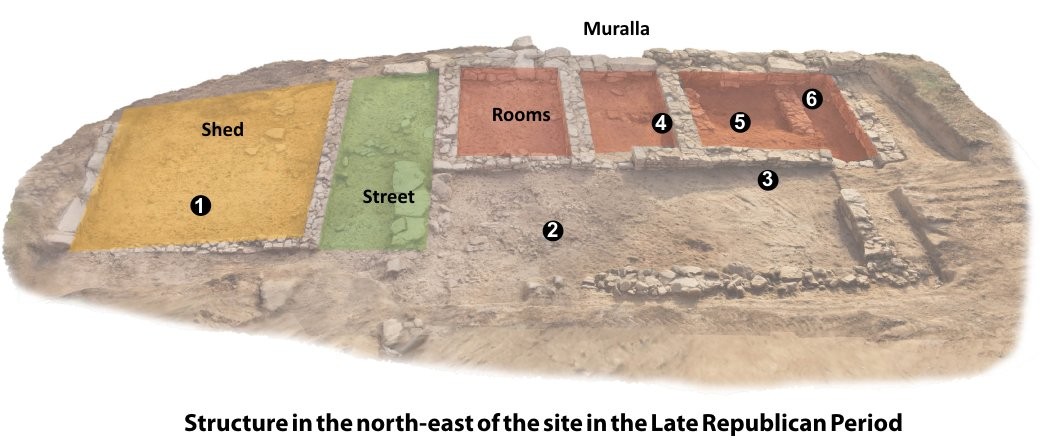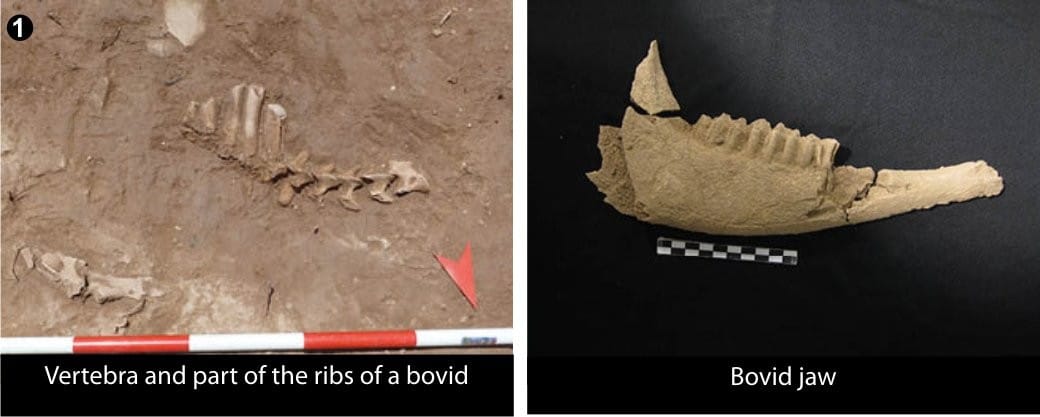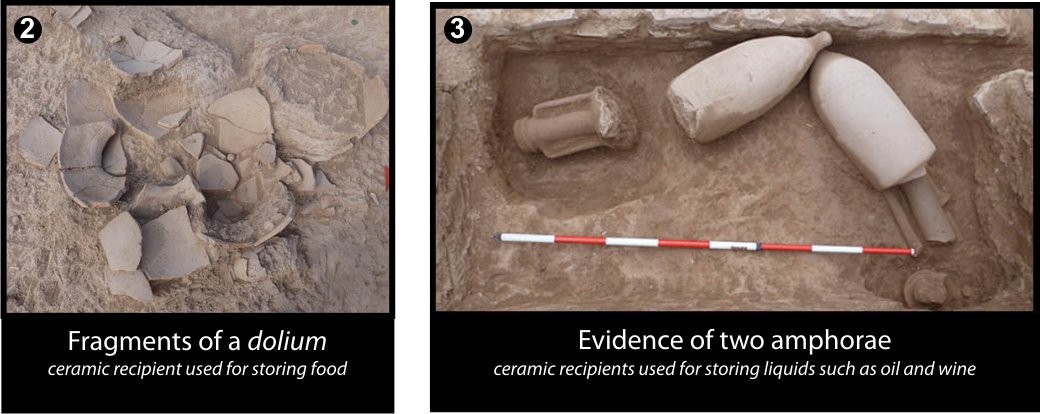Archaeological excavations have revealed various compartments in one part of the north-east wall of the site.
Thanks to the quality and the state of preservation of the archaeological material identified in this area, we can date the last occupation phase at Puig Ciutat to the middle of the 1st century BC.
What did they eat?
Among the archaeological remains, fragments were found of various ceramic recipients used for storage and transport of food products such as wheat, wine or oil.
One room has a concentration of bones from large herbivores. It could well have been a place for storing meat or a stable.
What was life like there?
According to the research, the different rooms belonged to a complex building whose purpose is unknown to us. Some of the rooms could have combined different functions, as they were found to contain both material to do with the production of everyday elements and material relating to the storage, consumption and processing of food.
What happened to Puig Ciutat?
A large number of projectiles from an armed confrontation have been recovered. Burnt areas have also been located. This suggests that there was possibly violent destruction and the site was sacked. The distribution of these military elements in the various rooms in the area of the city wall speaks for an attack begun at this end of the settlement.



